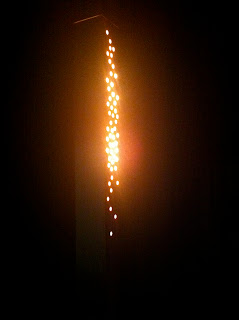 |
| My luminaire and the light effect that it creates. |
 |
| This is a close up of the aperture at the top of the luminaire. This detail also allows for ventilation within the Luminaire, allowing a place for heat created by the light bulbs to escape. |
 |
| View of the desired light effect and the aperture. |
 |
| This is the reverse side of the above image. Here you can see the elegant simplicity of the piece. |
 |
| Detail view of the aperture opening. This opening is magnetically adjustable, and can be completely closed as well. |
 |
| Top Piece |
 |
| Top Piece and Bottom Piece side by side. Each are 24 inches tall. |
 |
| Composite Drawing, showing the created light effect and scale drawings. |
 |
| Detail view of the scale drawings. |
 |
| Section drawing detail. |








No comments:
Post a Comment